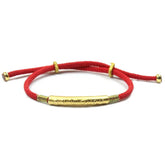Embracing Joy and Prosperity: The Laughing Buddha's Role in Feng Shui
The Laughing Buddha, a cherished icon in Feng Shui, is renowned for invoking feelings of joy and fostering an environment of affluence. This endearing figure is believed to draw in prosperity, elevate moods, and stimulate creative energies. When integrating the Laughing Buddha into your living or workspace, it's essential to choose a material that resonates with your personal aesthetic and to thoughtfully consider the size and placement of the statue to maximize its positive influence.
What is Laughing Buddha?
The Laughing Buddha, alternatively referred to as the Happy Buddha or Maitreya Buddha, holds a significant place in the practice of Feng Shui. This symbol of joy and prosperity is a common sight in both residential and commercial settings globally. In this article, we delve into the history of the Laughing Buddha and discuss its importance within the Feng Shui tradition. Additionally, we offer guidance on how to effectively integrate this auspicious figure into your environment for optimal benefits.
The Origins of the Laughing Buddha
Maitreya: The Future Buddha
The Laughing Buddha, a figure ingrained in Buddhist teachings, symbolizes Maitreya, the bodhisattva destined to be the future Buddha. He is expected to bring about an era of peace and enlightenment globally. Maitreya is commonly portrayed as an amiable, well-rounded character, with a prominent belly that serves as a symbol of joy and prosperity. This representation underscores the happiness and fulfillment that followers believe Maitreya will disseminate upon his arrival.
Budai: The Monk of Joy
Within the tapestry of Chinese tradition, the Laughing Buddha is closely linked to Budai, a monk from the 10th century celebrated for his affable demeanor and magnanimous heart. The affable image of Budai, coupled with his signature act of carrying a sack or bowl laden with riches, has established him as an emblem of wealth, plenitude, and serendipity. His effusive grin and hearty laughter are said to be so engaging that they have endeared him to many, with the belief that his presence can spread joy and blessings to all who encounter him.
A Symbol Across Cultures
The Laughing Buddha, while deeply anchored in particular historical and cultural narratives, has risen above these specific origins to emerge as an emblem of mirth, liberality, and satisfaction across the globe. His likeness is a common sight in diverse settings, from personal residences to commercial establishments, symbolizing the virtues he embodies and the optimistic vibrations he is thought to emit.
The narrative arc of the Laughing Buddha, from his mythical beginnings as Maitreya to his folkloric personification as Budai, encapsulates the collective aspiration for an era of tranquility and illumination. It is this timeless essence of mirth and largesse that resonates with and motivates individuals from various cultural backgrounds and age groups.
The Meanings of the Laughing Buddha in Feng Shui
Attracting Abundance and Prosperity
According to Feng Shui principles, the Laughing Buddha holds significant sway in drawing wealth and prosperity. Often depicted with a bag of riches or a bowl overflowing with coins, he symbolizes the accumulation of abundance and affluence. Placing a Laughing Buddha statue in the wealth corner of your home or business—typically identified as the southeast corner in Feng Shui—can serve to magnetize financial prosperity and favorable fortune, making it a popular practice among those aiming to augment their economic standing.
Fostering Joy and Balance
Renowned for his cheerful disposition, the Laughing Buddha epitomizes happiness and positivity. His mere presence is believed to cultivate a warm and harmonious atmosphere, nurturing joy and well-being among those present. By positioning a Laughing Buddha in a conspicuous location where it can be easily seen upon entering a room, you establish an ambiance of contentment and serenity, crucial elements for a harmonized and joyful living environment.
Stimulating Innovation and Achievement
In addition to his associations with wealth and happiness, the Laughing Buddha embodies creativity and accomplishment. His ample belly symbolizes good digestion, serving as a metaphor for assimilating fresh ideas and fostering inventive thinking. Placing a Laughing Buddha in your workspace or in the creativity corner of your home—typically situated in the western area—can invigorate your creative faculties and facilitate success in your pursuits. This facet of the Laughing Buddha renders him a valuable ally for individuals engaged in artistic endeavors, writing, entrepreneurship, and other creative pursuits.
Incorporating the Laughing Buddha into your Feng Shui regimen transcends mere physical placement; it entails embracing the values and energies he embodies. Whether you aim to augment your wealth, cultivate happiness and harmony, or stimulate your creativity and success, the Laughing Buddha stands as an enduring symbol of prosperity, joy, and inspiration.
Integrating the Laughing Buddha into Your Home or Business
For enthusiasts looking to embrace the Laughing Buddha in their personal or professional spaces, it's essential to thoughtfully consider several key factors to ensure that this symbol of joy and abundance enhances your environment effectively.
Choosing the Ideal Material:
The Laughing Buddha can be found crafted from a variety of materials such as bronze, porcelain, or jade. It's important to pick a material that resonates with your personal preferences and complements your current design scheme. The choice of material can greatly affect the ambiance and visual appeal of your space, so select one that aligns with your aesthetic and the energy you wish to cultivate.
Considering Size and Placement:
Laughing Buddha statues are available in a multitude of sizes, from diminutive to grand. When deciding on the statue, take into account the dimensions of the space you have and the specific area where you plan to position it. The statue's size and its placement should be in harmony with your surroundings to maximize its Feng Shui advantages and foster a sense of balance and prosperity.
How to Care For Your Laughing Buddha
To keep your Laughing Buddha statue a beacon of joy and prosperity, it's important to care for it with attention and respect. Here's how you can maintain its essence and enhance the positive energy it brings to your space.
Preserving the Statue's Purity:
Regular care is vital to maintain the statue's pristine condition. Use a soft, lint-free cloth to gently dust the figure, steering clear of abrasive chemicals that could harm the material, whether it's bronze, porcelain, or jade. For more persistent dirt, a mild soap solution can be employed, always followed by a gentle rinse and thorough drying to avoid any residue.
Invigorating the Space with Positive Energy: The Laughing Buddha is a conduit for positive energy. To keep this energy alive, situate the statue where it's easily visible to family members or customers, radiating happiness and optimism. Occasionally, a slight repositioning of the statue can help refresh the energetic vibe it imparts to your environment.
Honoring the Symbolic Significance:
Appreciating and honoring the Laughing Buddha's cultural and spiritual depth can amplify its positive influence. It's not merely a decorative piece but an emblem of joy, wealth, and fulfillment. By placing it at eye level or in a prominent, respected spot in your home or workplace, you show deference to its significance, allowing its beneficial qualities to seep into the atmosphere.
Strategic Placement for Optimal Energy:
Steer clear of positioning the Laughing Buddha in areas associated with lower energy, such as bathrooms or storage areas. Instead, opt for high-energy locales like living rooms, foyers, or business spaces. This placement ensures the statue's presence elevates the room's energy, fostering an environment conducive to wealth and joy for all who interact with the space.
Nurturing Your Laughing Buddha:
By tending to your Laughing Buddha with care and reverence, you not only safeguard its physical integrity but also boost the abundance and positive energy it represents. This mindful approach ensures that the Laughing Buddha becomes a treasured and integral part of your space, fostering an atmosphere of happiness and prosperity for years to come.
Conclusion
Adored for its representation of joy and prosperity, the Laughing Buddha is a prominent figure in Feng Shui. If your aspirations include attracting wealth, fostering happiness, or stimulating creativity, then integrating a Laughing Buddha into your space could be an effective method. By making thoughtful choices regarding the material, size, and positioning of the statue, you can cultivate a warm and balanced atmosphere that encourages positivity, serenity, and affluence.








Leave a comment
All blog comments are checked prior to publishing